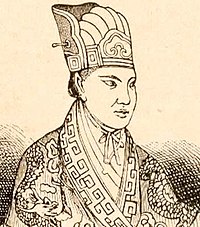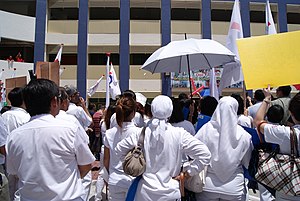Politics of Orioni: Difference between revisions
m (→Judicial: +links) |
m (→Weekly agenda: list to text) |
||
| Line 175: | Line 175: | ||
At the apex of the Orioni judiciary stands the Imperial Court of Justice. As the highest court in the land, it deals with matters of national importance, interpreting constitutional laws and settling critical disputes that have implications on a countrywide scale. Descending in the judicial hierarchy, each ''kifile'' (province) houses its own Palace of Justice. These palatial courts cater to provincial matters, serving as the primary judicial institutions for each province of Orioni. Their mandate involves addressing concerns and conflicts that emerge within their specific geographic boundaries. Further down, the ''wereda'' (deparment) level is marked by the House of Justice. These establishments oversee legal cases and disputes that pertain to their respective departments. They play a crucial role in ensuring that justice is accessible to the citizenry at the departmental level, providing a platform for adjudication and resolution of local disputes. Lastly, at the grassroots of the Orioni judicial structure lie the Table of Justice. Situated within municipalities, these entities handle legal matters at the most local level. Their jurisdiction includes cases originating within the municipality, ensuring that even the smallest of disputes have a dedicated judicial platform for resolution. | At the apex of the Orioni judiciary stands the Imperial Court of Justice. As the highest court in the land, it deals with matters of national importance, interpreting constitutional laws and settling critical disputes that have implications on a countrywide scale. Descending in the judicial hierarchy, each ''kifile'' (province) houses its own Palace of Justice. These palatial courts cater to provincial matters, serving as the primary judicial institutions for each province of Orioni. Their mandate involves addressing concerns and conflicts that emerge within their specific geographic boundaries. Further down, the ''wereda'' (deparment) level is marked by the House of Justice. These establishments oversee legal cases and disputes that pertain to their respective departments. They play a crucial role in ensuring that justice is accessible to the citizenry at the departmental level, providing a platform for adjudication and resolution of local disputes. Lastly, at the grassroots of the Orioni judicial structure lie the Table of Justice. Situated within municipalities, these entities handle legal matters at the most local level. Their jurisdiction includes cases originating within the municipality, ensuring that even the smallest of disputes have a dedicated judicial platform for resolution. | ||
=== | === Operational schedule === | ||
[[File:Circle pentagon thing.jpg|thumb|Weekly political schedule, for efficient governing.]] | |||
Each week, the governmental operations of Orioni adhere to a structured schedule, ensuring a systematic approach to governance and checks and balances among its branches: | |||
# On Mondays, the executive branch faces {{wp|Interpellation (politics)|Interpellation}}, a procedure during which the legislative branch questions and examines the actions and policies of the executive. This ensures transparency and accountability of the executive's functions. | |||
# Tuesdays are dedicated to the [[Sibiseba]] ([[Oharic language|Oharic]]: “assembly”), where members convene to undertake legislative tasks, discuss new bills, and further existing legislative initiatives. | |||
# By midweek, on Wednesday, the judicial branch plays its oversight role, critically reviewing the actions and decisions of the legislative branch. This process ensures that the laws and resolutions passed align with the constitution and established legal frameworks. | |||
# Thursdays witness the convening of subcouncils, specialized committees or groups within the executive branch, which address specific areas or issues pertinent to executive functions and policy implementation. | |||
# Wrapping up the week, on Fridays, the [[Memakiriti]] (Oharic: “imperial council”) assembles. This body focuses on executive tasks at the highest echelon, deliberating on nationwide policies, executive decisions, and overarching strategies for the nation. | |||
This weekly schedule encapsulates the intricate dance of Orioni's governmental branches, highlighting their distinct roles and their interconnected checks and balances. | |||
== Local government == | == Local government == | ||
Revision as of 12:06, 5 September 2023
 | |
| State type | Unitary parliamentary constitutional monarchy |
|---|---|
| Constitution | Constitution of Orioni |
| Legislative branch | |
| Name | Sibiseba |
| Type | Unicameral |
| Appointer | Direct election |
| Executive branch | |
| Head of State | |
| Title | Empress |
| Currently | Joni I Nabérrie |
| Head of Government | |
| Title | Chairlady |
| Currently | Awidefale Rezovi |
| Cabinet | |
| Name | Imperial Council |
| Current cabinet | Rezovi I |
| Ministries | 12 |
| Judicial branch | |
| Name | Judiciary of Orioni |
 |
|---|
| This article is part of a series on the politics and government of Orioni |
The politics of Orioni take place with the framework of a parliamentary democracy under a constitutional monarchy in which the monarch, currently Empress Joni, is the head of state while the Chairperson of the Memakiriti, currently Awidefale Rezovi, is the head of government. Orioni has been described as a bureaucratic monarchy where legally the power lies in the hands of the monarch, but the real power lies in the hands of the bureaucracies surrounding her. The Orinese Constitution provides for a separation of powers. The political system of Orioni consists of an executive branch, a legislative branch, and a judicial branch.
Executive power is exercised by the Chairperson of the Imperial Council (Oharic: Memakiriti). The Government consists of the Chairperson and councillors. The government, including the Chairperson, can be revoked by the Sibiseba. The Sibiseba (Anglish: Assembly) passes statutes and votes on the budget; it controls the action of the executive through formal questioning on the floor of the houses of Sibiseba and by establishing commissions of inquiry. The Orinese political system is a multi-party system. Former executive leaders are members of the Sibiseba. The judiciary is based upon the civil law system and operates independently from the executive and the legislative branches. The highest court is the Imperial Court of Orioni.
History
An early executive branch was the Imperial Council (Oharic: Memakiriti). At its creation in 1175, it was composed of four councillors or advisors, with the monarch representing the fifth decisive vote. The position of “Councillor” (abbreviated as Cllr) was appropriated from city government and carried over to the national level. The title precedes the holder's other titles, for example Cllr Andrew Pipkin. Each councillor was the head of a specialized department and a geographical area of expertise (several provinces). The monarch would open her personal correspondence and discuss hearings only in the presence of at least 2 councillors. They provided council to the monarch, and confirmed (or co-signed) and accelerated royal decisions (edicts and declarations). The Council was considered a very important body of government. The various councillors were still subject to the crown. Some historians even consider it to be more important than the Monarchy itself.[citation needed] The four original departments were:
- Councillor of the Household: oversaw the royal entourage, clergy, affairs of the capital, royal buildings, and personal military guard.
- Assisted by the Keeper of the Seals.
- Councillor of the Sword: First Officer of the Crown, and highest commander of the army, oversaw border provinces.
- Assisted by the Master of the Horse.
- Councillor of the Ships: highest commander of the navy, oversaw colonial matters.
- Assisted by the Admiral of the Galleys.
- Councillor of Mediation: oversaw diplomacy, foreign relations and trade.
- Assisted by the Collector of the Tithe.
In 1195 new laws were introduced to celebrate 20 years of restoration. An early legislative branch was formed as part of the constitutional law reforms, transforming the monarchy into a more deliberative form. The Gizatochi was an early precursor to the Sibiseba. This institutionalised assembly critiqued monarchical decisions, discussed laws about taxes, trade, diplomacy, and military matters. It was a select committee that included fifty noble representatives from the Tamanyi cities. These nobles were the heads of all important families. However, as the population grew, the Gizatochi became more and more dysfunctional, as feuds between families crippled its functioning. In later centuries, this was expanded to include representatives from other cities as well. Nevertheless, colonial possessions were not represented.
Monarchy
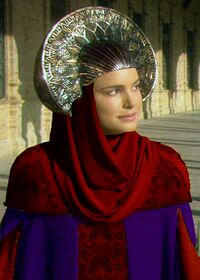
The monarch officially retains executive power. Following the establishment of the Sibiseba, the duties of the monarch have since become strictly representative and ceremonial, which while having some important powers and responsibilities, generally acts according to advice from the Chairperson and other members of the Imperial Council. The Empress (currently Joni I) is the head of state, though with limited prerogatives. Accordingly, the Monarch is commander-in-chief of the Imperial Orinese Defence Force, and serves as chief diplomatic official abroad and as a symbol of unity. HI&RH Joni I of the House of Nabérrie was crowned Empress of Orioni in 2003. HRH Alesia, Grand Princess of Dion, is the current legal and rightful heir to the throne and the Empire.
National government
The country is organised with separation of powers. A strong, centralized government is necessary to maintain order and prevent conflict in society. However, a single ruler or group should not have complete control over all aspects of government. Therefore, government powers are separated into different branches, with each branch having specific responsibilities and powers. The legislative branch of government is responsible for making laws, the executive branch is responsible for enforcing laws, and the judicial branch is responsible for interpreting laws. This separation of powers prevents any one branch from becoming too powerful and helps to ensure that the government acts in the best interests of the people.
Executive
Imperial Council
The Imperial Council (Oharic: Memakiriti) has been the de facto executive cabinet for most of the country's modern history. It led by the Chairperson and supported by councillors. The councillors are responsible for heading a government department. The council is the supreme state advisory body to the Monarch, and advises her on policy matters. The council consists of 12 councillors, chaired by 1 chairperson, and is divided over three topical sub councils. It meets to discuss matters of state in the capital city of O'polis. The current Rezovi Government, a two-party cabinet since 2019, consists of a coalition of the left-wing Socialist Party of Orioni and centre-left Blueropa.
| Chairlady of Imperial Affairs: Awidefale Rezovi | ||
Subcouncil for Power (Oharic: Hayili)
|
Subcouncil for Profit (Oharic: Idigeti)
|
Subcouncil for Prosperity (Oharic: Hizibi)
|
Chairperson
The executive branch is led by the Chairperson, supported by councillors. The Chairperson is the Monarch's deputy as the head of government, and assumes the role of chairing the Council. Unlike other countries, the Chairperson of Orioni is not elected directly by the people. Rather, they're invited to form a government in the name of the Monarch, by virtue of their position as the leader of the largest political party. They are elected by the legislative Sibiseba. In Orinese politics, the Chairperson is equivalent to that of a prime minister. S/he heads the imperial council and lead of the councillors in the executive branch of government.
| Portrait | Name (Birth–Death) |
Took office | Left office | Political party | Elected | Notable credit(s) |
|---|---|---|---|---|---|---|
 |
Mrs Lusiya Selami ina Gitiri (1878-1967) |
1951 | 1955 | Constitutional Party | 1951 | Establishment of Europan Commercial Alliance; decolonisation of Burkini. |
 |
Mrs Louam Zemichael ina Yessuf (1883-1960) |
1955 | 1959 | Constitutional Party | 1955 | Dealing with the economic crisis of 1958. |
 |
Mrs Hawa Nega (1896-1987) |
1959 | 1963 | Constitutional Party | 1959 | $Credit(s) |
 |
Mrs Elshaday Berta ina Aman (1901-1975) |
1963 | 1967 | Constitutional Party | 1963 | $Credit(s) |
 |
Mrs Yekirigizi Sinetsihufi (1912-1997) |
1967 | 1975 | WPO | 1967 1971 |
Recovery from Second Argic War. |
 |
Mrs Betesida Leul (1907-1988) |
1975 | 1979 | WPO | 1975 | Recovery from economic crisis. |
 |
Mrs Beza Menkir Alem (1911-2004) |
1979 | 1983 | Motherland Movement | 1979 | $Credit(s) |
 |
Mrs Eleni Arame (1918-2019) |
1983 | 1987 | Liberal Homeland Party | 1983 1991 |
$Credit(s) |
 |
Mr Hano Ketenya (1924-2020) |
1987 | 1991 | WPO | 1987 | $Credit(s) |
 |
Mrs Eleni Arame (1919-2007) |
1991 | 1995 | Liberal Homeland Party | 1983 1991 |
$Credit(s) |
 |
Mrs Salayish Ciris (1937-) |
1995 | 2003 | Blueropa | 1995 1999 |
Infrastructure projects[1] |
 |
Mrs Chandra Pristo (1952-) |
2003 | 2007 | SPO | 2003 2015 |
Establishment of Entente of Oriental States |
 |
Mr Ionas Strupar (1970-2016) |
2007 | 2015 | PO&N | 2007 2011 |
Various economic and military projects[2] |
 |
Mrs Chandra Pristo (1952-) |
2015 | 2019 | SPO | 2003 2015 |
Financial recovery; hosting the 2018 UENA World Cup; Green Shift; STEM grants; Strategic petroleum reserves[3]; expansion of EOS. |
 |
Ms Awidefale Rezovi (1975-) |
2019 | Incumbent | SPO | 2019 | Bainbridge Islands peacekeeping; 5G rollout; establishment of CAOS. |
Legislative
The primary legislative body of Orioni is the Sibiseba (Oharic: “assembly”). This unicameral institution is headquartered in O'polis, which is the capital city of Orioni. Notably, the unicameral nature of the Sibiseba offers various advantages. Firstly, it promotes democratic and efficient lawmaking. The legislative procedures remain straightforward, devoid of potential gridlocks that can arise between two separate chambers. This approach not only streamlines decision-making but also curtails administrative expenses. A distinct feature of the Sibiseba is its indissolubility; it remains a continuous body that cannot be dissolved. It wields the apex legislative authority, with its decisions being final and binding, free from the interference of any other governmental entities. This autonomy ensures that neither the Monarch nor the executive branch intervenes in its legislative activities.
The Sibiseba serves a dual purpose. Besides being the primary law-making institution, it plays a pivotal role in maintaining inter-provincial harmony within the Empire. Should any inter-provincial conflict arise, the matter is escalated to the Sibiseba. The assembly then deliberates and votes on the issue, keeping in mind the broader welfare of the Orionise populace. Over the years, the scope of the Sibiseba's authority has expanded to encompass critical state affairs. This includes representing Orioni in global institutions, making war declarations, and sanctioning military or technological aid to allies.
For Orionis considering a political career, the eligibility criteria to contest elections and join the Sibiseba are set at a minimum age of 25 years. Meanwhile, the right to vote is conferred upon those aged 20 and above, a shift from the previous age threshold of 21 before 1991. A unique aspect of the Sibiseba's composition is its dynamic size: each sibisebali represents an individual constituency, and the total number of constituencies—and by extension, sibisebali—is re-assessed ahead of every election. As of 2021, the Sibiseba is comprised of 162 sibisebali, each serving a tenure of four years. Achieving a majority necessitates securing 82 seats.
In accordance with the Constitution of Orioni, certain distinguished individuals are granted membership by right or senator de drept in the Sibiseba. This honor is reserved for:
- (1) The heir apparent to the throne;
- (2) Leaders of state-recognized religious institutions;
- (1) The president of the Andro Academy;
- (2) Past chairpersons of the Imperial Council;
- (5) Former councillors with a minimum of five years of service;
- (2) Retired chief justices from the Imperial Court of Justice;
- (0) Previous supreme commanders of the IODF, though as of the current arrangement, there are none.
Judicial

The judicial system of Orioni is deeply rooted in the ancient Aroman philosophy, specifically anchored around the concept of alítheia (αλήθεια), which translates to “truth.” This foundational principle underscores the importance of truth and justice in the legal framework and proceedings of the nation. The judicial system comprises four tiers, each addressing legal matters pertinent to their respective jurisdictions. Together, these varied tiers of courts harmoniously function to uphold the rule of law throughout Orioni, reflecting the age-old Aroman emphasis on truth and justice.
At the apex of the Orioni judiciary stands the Imperial Court of Justice. As the highest court in the land, it deals with matters of national importance, interpreting constitutional laws and settling critical disputes that have implications on a countrywide scale. Descending in the judicial hierarchy, each kifile (province) houses its own Palace of Justice. These palatial courts cater to provincial matters, serving as the primary judicial institutions for each province of Orioni. Their mandate involves addressing concerns and conflicts that emerge within their specific geographic boundaries. Further down, the wereda (deparment) level is marked by the House of Justice. These establishments oversee legal cases and disputes that pertain to their respective departments. They play a crucial role in ensuring that justice is accessible to the citizenry at the departmental level, providing a platform for adjudication and resolution of local disputes. Lastly, at the grassroots of the Orioni judicial structure lie the Table of Justice. Situated within municipalities, these entities handle legal matters at the most local level. Their jurisdiction includes cases originating within the municipality, ensuring that even the smallest of disputes have a dedicated judicial platform for resolution.
Operational schedule
Each week, the governmental operations of Orioni adhere to a structured schedule, ensuring a systematic approach to governance and checks and balances among its branches:
- On Mondays, the executive branch faces Interpellation, a procedure during which the legislative branch questions and examines the actions and policies of the executive. This ensures transparency and accountability of the executive's functions.
- Tuesdays are dedicated to the Sibiseba (Oharic: “assembly”), where members convene to undertake legislative tasks, discuss new bills, and further existing legislative initiatives.
- By midweek, on Wednesday, the judicial branch plays its oversight role, critically reviewing the actions and decisions of the legislative branch. This process ensures that the laws and resolutions passed align with the constitution and established legal frameworks.
- Thursdays witness the convening of subcouncils, specialized committees or groups within the executive branch, which address specific areas or issues pertinent to executive functions and policy implementation.
- Wrapping up the week, on Fridays, the Memakiriti (Oharic: “imperial council”) assembles. This body focuses on executive tasks at the highest echelon, deliberating on nationwide policies, executive decisions, and overarching strategies for the nation.
This weekly schedule encapsulates the intricate dance of Orioni's governmental branches, highlighting their distinct roles and their interconnected checks and balances.
Local government
In the Taneino period, the position of Danya (Oharic: “judge”) was introduced. It existed in Ayubi, Mekabiri, Tamurin, Thubani, etc. In the Owara period, the old role of Danya was transformed into a more modern Vayiresini, with the goal of better administering the greatly increased colonial area.
Political parties and elections
According to its constitution, Orioni has a multi-party political system. However, in practice, the Constitutional Party was the long-time ruling party and dominated the Orinese political arena up until the late 1960s. Second was the Modern Orioni Party, created to organize popular support for the monarchy after the failed coup d'état of 1928. In the 1940s, the Workers Party arose to represent the emerging working class. These three groups still control Orinese politics, but they have changed a lot.
(WIP. Why does the Socialist Party have so much political power in a monarchy like Orioni? As one of the last monarchies in Oriental Europa, concessions had to be made to keep the population happy. Pressure and examples from neighbouring countries are causing more social policies to seep in. The toleration of a limited socialist policy is necessary for the monarchy to survive, without slipping into a dictatorship as in Ide Jima.)
Types
Alliances
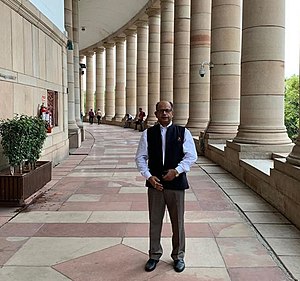
In the realm of Orinese politics, alliances often form as strategic partnerships between different parties or entities to achieve shared objectives or mutually beneficial outcomes. Understanding the nature and dynamics of these alliances is crucial for comprehending the political landscape of many nations.
A senior partner typically refers to the dominant entity within a Coalition government. This party wields more influence, either due to its larger size, electoral strength, or historical prominence. It sets the primary agenda for the alliance and plays a significant role in decision-making processes. Conversely, a junior partner is a party or group within an alliance that possesses less influence when compared to the senior partner. While still integral to the alliance, the junior partner has fewer seats, less representation, or a more limited role in the collective decision-making process. Despite its secondary status, a junior partner can still exert influence, particularly in situations where the senior partner requires its support to achieve specific objectives.
There are two frequently occurring alliances in Orinese politics. The centrist alliance usually denotes a coalition of parties that align themselves with moderate political views. Rather than leaning heavily to the left or right, parties within a centrist alliance prioritize balanced policies and seek middle-ground solutions. This positioning can appeal to a broad spectrum of the electorate, as it tends to avoid extreme stances and aims for pragmatic and inclusive solutions. The right-wing alliance, on the other hand, is formed by parties with conservative or right-leaning ideologies. Such an alliance emphasizes values like traditionalism, limited government intervention in the economy, and often a stronger stance on nationalistic or security issues. Right-wing alliances form in opposition to left-leaning groups and advocate for policies reflecting their core principles and beliefs. In the fluid landscape of politics, these alliances are pivotal in shaping policies, driving narratives, and influencing electoral outcomes. Their compositions and strategies reflect the broader socio-political context in which they operate.
Elections
Elections in Orioni are a foundational element of its democratic machinery, representing the nation's commitment to representational governance. The Orioni electoral process, shaped by legislative measures and modern technological inputs, has experienced significant evolution over the years to ensure its continued resonance with its citizens. The electoral practices in Orioni underscore the nation's unwavering dedication to the principles of democracy. Through a combination of robust legislative frameworks, technological innovations, and transparent operational protocols, Orioni endeavours to ensure that its electoral outcomes genuinely reflect the collective intent and aspirations of its citizens.
Within the context of Orioni's electoral framework, all citizens aged between 20 and 60 are legally obligated to participate in the voting process. For individuals aged 60 and above, participation is discretionary, offering them the liberty to choose whether to engage in the electoral proceedings. This stipulation was formally instituted within the Electoral Code of 1991. An essential provision within this code was the decision to lower the voting age from 21 to 20, which aimed to broaden the electorate by enabling younger citizens to partake in the nation's democratic discourse.
Elections in Orioni are conducted at a fixed interval of every four years. This periodicity ensures a regular appraisal and renewal of the nation's leadership, mirroring the evolving priorities and aspirations of its populace. The campaigning phase spans a total of five months, commencing in July and concluding in November. This duration provides political entities with a sufficient window to engage with the electorate, articulating their vision and key policy proposals. The culmination of this phase is the casting of votes, which is scheduled for the first week of December. By the second week of the same month, the electoral verdict is announced, revealing the winners. Following this, the responsibility of government formation is vested in the Sibiseba (Parliament). The Sibisebali (parliamentarians) engage in the process of coalition building and negotiations, a process that is well-documented in various procedural guidelines. Once formed, the new government marks the inauguration of its term on January 1st.
In a move to amalgamate technological advancements with the electoral procedure, Orioni pioneered the adoption of electronic voting in 1995. The initial phase of this transition saw pilot tests being implemented in the province of Meda. The design philosophy behind the Orinese electronic voting machine prioritized simplicity, drawing inspiration from the design and functionality of a public phone booth. The machine was engineered to seamlessly integrate three critical functionalities: verifying the identity of the voter, ensuring the confidentiality and security of each vote, and accurately tallying the votes. A significant objective behind this technological shift was to nullify potential malpractices, particularly those stemming from falsified or forged public documentation. To foster a climate of transparency and confidence, the design allows political parties to scrutinize the voting machine's software prior to elections, facilitating comprehensive audits to validate the machine's operational integrity.
Policy making
Foreign Relations
Men in government
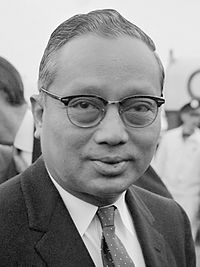
In the socio-political history of Orioni, men have traditionally been underrepresented in governmental roles and various other institutions. For many centuries, the societal norms and customs predominantly cast men in roles tied to business and military occupations. This alignment was seen both domestically within Orioni and in their international relations and expeditions. These historically entrenched roles were indicative of the gendered divisions of labour and power in Orionese society.
However, the dynamics began to shift during the 20th century, marking a significant change in the perception and acceptance of men in the sphere of politics. Gradually, men started breaking the traditional barriers and aspired to leadership positions within the Orinese political arena. As of data recorded in September 2021, the participation rate of men in the Orioni government stood at approximately 33%, showcasing a growing trend of male inclusion in the nation's governance.
Notable male leaders in Orioni who have been instrumental in challenging the status quo and establishing a precedent for future generations include:
- 1917: Mr Tomeniko Anāsa distinguished himself by becoming the first male diplomat from Orioni. He was appointed the ambassador to the nation of Mekabiri, setting a trend for further diplomatic engagements.
- 1921: In a remarkable political achievement, Baron Liyoni Kinigiyariti of Iwineti was elected as the first male mayor, breaking traditional barriers in municipal leadership.
- 1929: Mr Luchi Sifira achieved a landmark by being appointed the first male Sibisebali, adding another layer to the slowly diversifying political landscape.
- 1951: Making strides in the domain of council politics, Mr Bizati Mekakelenya-Korebita earned the distinction of becoming the first male councillor. He notably served in the esteemed position of Defence Councillor under the leadership of Chairlady Lusiya Selami ina Gitiri.
- 1987: In a significant step forward, Mr Hano Ketenya ascended to one of the topmost roles in Orioni's political hierarchy by becoming the first male chairperson. This was a testament to the changing societal norms and the increasing acceptability of men in prominent political roles.
These leaders, among others, have paved the way for more inclusive political representation in Orioni, bridging historical gaps and setting a course for a more egalitarian future.
Terminology
- CL: Chairlady, leader of the executive branch of government. Originally, for a male Chairperson the title of Chairlord was proposed. However, the first man in this position, Hano Ketenya, was a member of the Workers Party of Orioni and preferred the less aristocratic title of Chairman.
- CM: Chairman, see CL.
- Cllr: Councillor, member of the executive branch of government.
- IC: Imperial councillor, see Cllr.
- MS: Member of the Sibiseba, the legislative branch of government.
- Sibisebali: see MS.
References
- ↑ Bullet train from O'polis to Zuidhaven (15 February 2016)
- ↑ Big Story News, Secret submarine plans (21 February 2016)
- ↑ Roiters, Government to build up storage of petroleum (25 November 2018)



